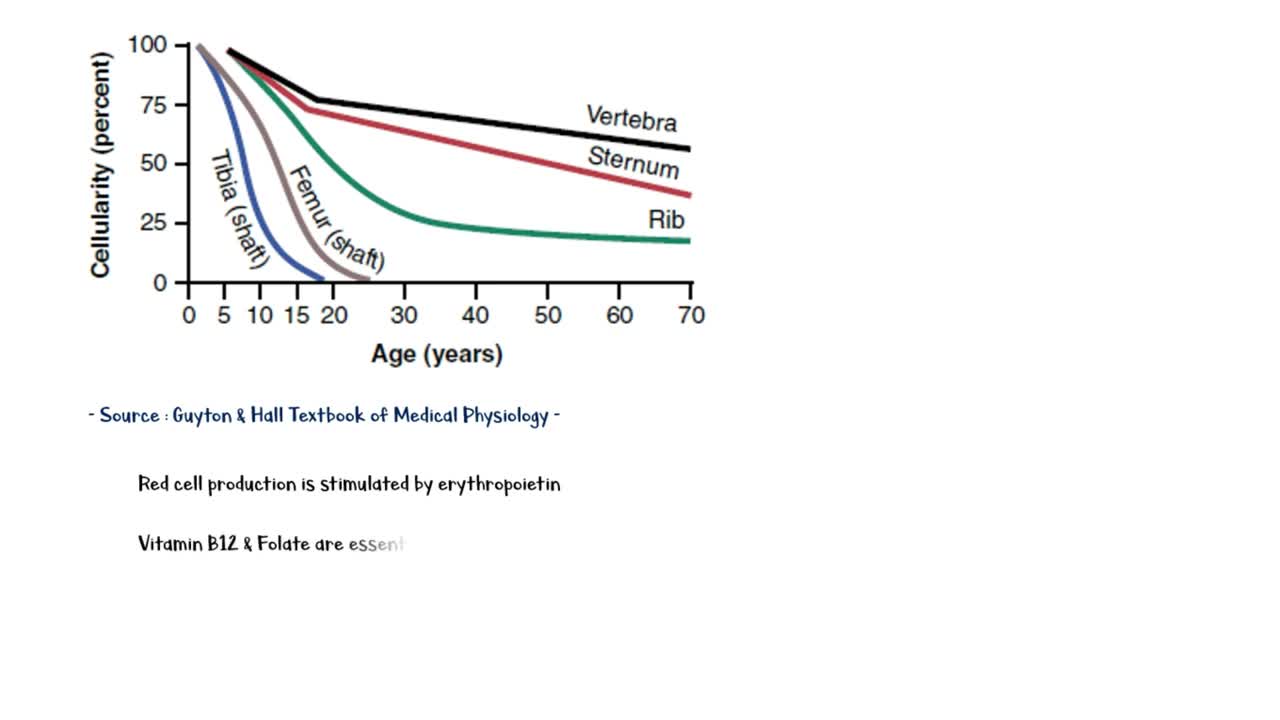Premium Only Content

Red Blood Cell - Structure And Function
Blood is composed of 2 major components; blood cells, and plasma. Plasma occupies approximately 55% of the total blood volume, and the remainder is occupied by white blood cells, platelets, and red blood cells. Red blood cell is the most abundant type of cells in blood. Normal red blood cells are biconcave discs, having a mean diameter of 7.8 micrometers, and a thickness of around 2.5 micrometers. The average volume of a single red blood cell is about 90 to 95 cubic micrometers. The average count of red cells in a healthy male is about 5.2 million cells per cubic milliliter, and in women, it’s around 4.7 million cells per cubic milliliter. Red cells can change their shape remarkably as they squeeze through capillaries. In fact, they can get deformed into almost any type.
During the early weeks of embryonic life, primitive, nucleated red cells are produced in the yolk sac. In the second trimester, liver is the main organ to produce red cells, although spleen and lymph nodes also produce small amounts. During the last month or so of gestation, and after birth, red cells are produced exclusively by the bone marrow.
This graph shows the relative rates red blood cell production by different types of bones after birth. Red cell production is stimulated by erythropoietin hormone. And vitamin B12 and folate are essentially required for the synthesis of red cells. For a more comprehensive lecture on red cell production, you can watch my erythropoiesis video, the link is in the description below. The average lifespan of a red cell in a healthy individual is around 120 days. Older red cells are destructed mainly by the spleen.
Mature red cells do not contain nuclei, mitochondria, or an endoplasmic reticulum. However, they contain cytoplasmic enzymes that are capable of synthesizing ATPee. In addition to that, these enzymes maintain the membrane flexibility of red cells. Maintain transport of ions through the red cell membrane. Keep the iron in hemoglobin in the ferrous form. And prevent oxidation of red cell proteins.
The main function of red cell is to transport hemoglobin, which in turn, carries oxygen from the lungs to the tissues as oxy hemoglobin. The average hemoglobin concentration in red cells is 34 g per 100 ml of cells. They also transport carbon dioxide from the tissues to the lungs as carb amino hemoglobin to excrete carbon dioxide from the body in exhaled air.
Red cells have other functions besides transporting oxygen and carbon dioxide. For instance, they contain a large quantity of carbonic anhydrase enzyme, which catalyzes the reversible reaction between carbon dioxide and water to form carbonic acid, increasing the rate of this reaction. The rapidity of this reaction increases the ability of blood to transport enormous amounts of carbon dioxide in the form of bicarbonate. In addition, hemoglobin is an excellent acid base buffer. Therefore, red cells are responsible for most of the acid base buffering power of whole blood.
red blood cells,blood cells,oxygen transport in blood,red blood cell production,red blood cell functions,rbc,rbc anatomy and physiology,rbc structure,red blood cell lecture,red blood cells function,red blood cells count,red blood cells normal range,types of red blood cells,how to increase red blood cells,high red blood cells in urine
-
 2:05:58
2:05:58
TimcastIRL
11 hours agoTrump Just REVOKED Legal Status Of 530,000 Migrants, Deportations NOW w/ Alex Stein | Timcast IRL
207K307 -
 3:39:01
3:39:01
I_Came_With_Fire_Podcast
15 hours agoCHINA MILITARY PURGE | TESLA OWNERS DOXXED | NGAD F-47
50.8K16 -
 5:44:43
5:44:43
Shield_PR_Gaming
16 hours agoSome Gray Zone Warfare with Followers & more games!
69.8K3 -
 31:38
31:38
Michael Franzese
12 hours agoTony Accardo: The Genius That Built Chicago’s Most Powerful Empire
70.2K4 -
 45:40
45:40
BonginoReport
14 hours agoCritics Give Disney’s Feminist “Snow White” a Rotten Apple (Ep.10) - Nightly Scroll w Hayley 03/21/2025
128K158 -
 1:47:40
1:47:40
Kim Iversen
16 hours agoWhy Did Sarah Ashton-Cirillo Help Jail Gonzalo Lira? His Side of The Story
117K228 -
 9:00:23
9:00:23
Dr Disrespect
19 hours ago🔴LIVE - DR DISRESPECT - TRIPLE THREAT CHALLENGE - WZ, PUBG, FORTNITE
207K34 -
 12:23
12:23
Adam Does Movies
14 hours ago $3.68 earnedSnow White (2025) Movie Review - Disney Does It Again!
44.6K12 -
 1:33:43
1:33:43
Tucker Carlson
13 hours agoSteve Witkoff’s Critical Role in Negotiating Global Peace, and the Warmongers Trying to Stop Him
122K190 -
 15:56
15:56
T-SPLY
17 hours agoDemocrats Are Now Lying About The Department Of Education Shutdown
92.8K50